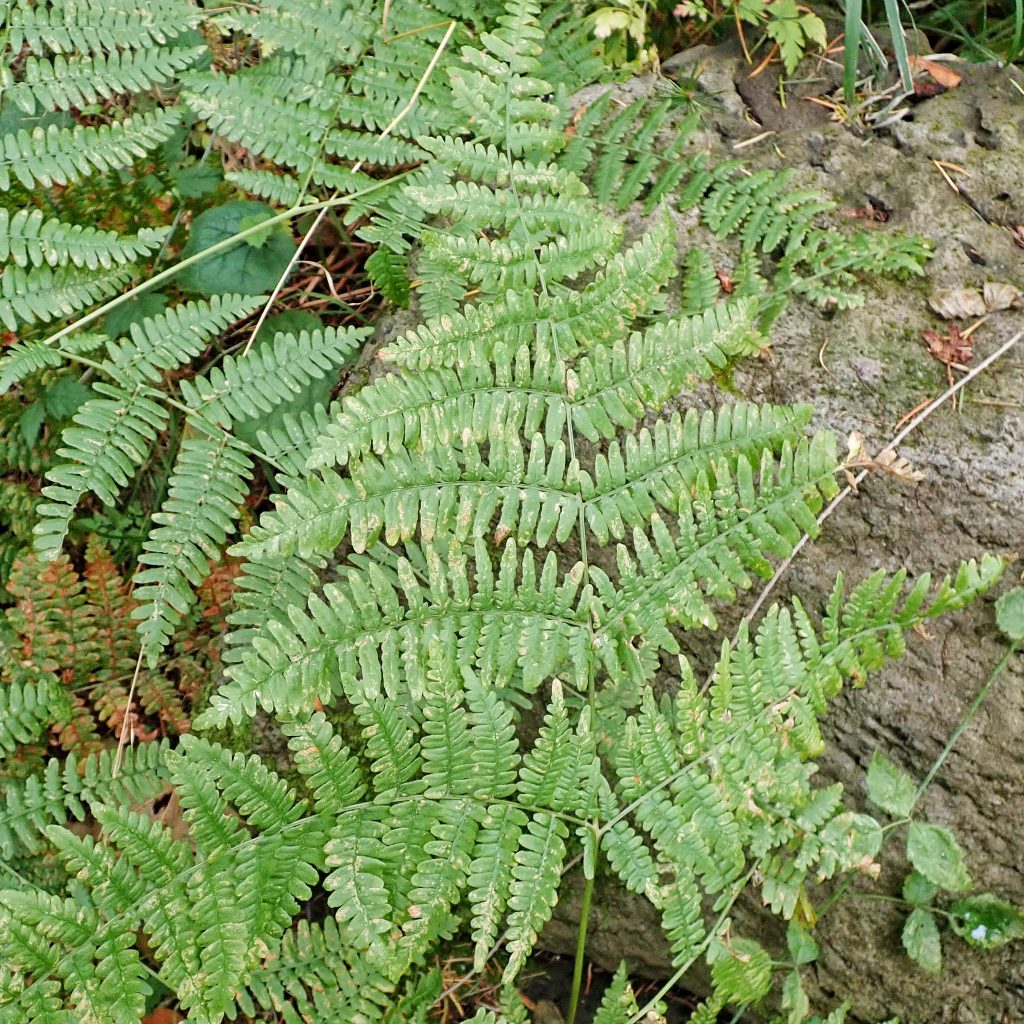
So, here is part three of my series on distinguishing between some of the large pinnate ferns of our region. Bracken ferns can be found nearly worldwide (they are considered to be the most widespread fern in the world, and one of the 5 most widespread plants), a testament to the dispersability of their very light spores, and their adaptability to a wide variety of soil types. Mature plants may produce a quarter of a billion spores annually, and when multiplied by the millions of plants in our region, there are phenomenal numbers of spores raining continually raining down, so it’s easy to see why Bracken Ferns are early colonizers of disturbed ground and after fires.
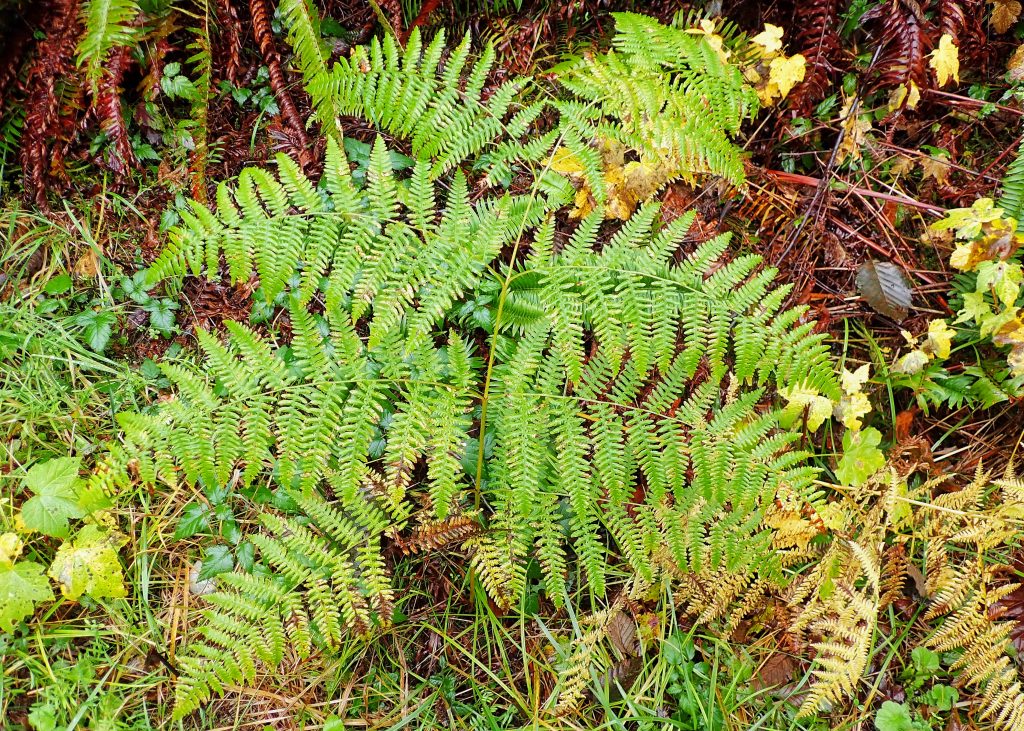
Pteridium aquilinum (Bracken Ferns) can be huge (up to 15’ tall!, though usually closer to 5-6’), and they grow singly from many branched rhizomes (rather than in clusters like Dryopteris expansa and Lady Ferns), though this isn’t always noticeable since they often grow in tangled groups, interspersed with previous years fronds. They are thrice pinnate, with large spread out and spreading symmetrical pinnae (basically compound leaves; a nice illustration of fern terminology can be found here), arranged oppositely in an airy triangle with a long exposed stalk. Their pinnules are either smooth, gently lobed, or minutely toothed on the margins. Dryopteris expansa is smaller, has pinnules that are irregularly and jaggedly toothed, is also thrice pinnate, with blades that are triangular in shape (though more densely arrayed with foliage) and a long, exposed stalk, but the lowest pinnae are asymmetrical, with the top pinnules nearest the stalk being much shorter than the pinnules below. Athyrium filix-femina (Lady Fern) also has large irregular teeth on the pinnules, but the blade is diamond shaped, with the longest pinnae in the middle of the blade, and shorter ones toward the base and the tip, and usually less than 10% of the stalk is exposed at the base. They are also usually twice pinnate, although I’ve seen some that were thrice pinnate.
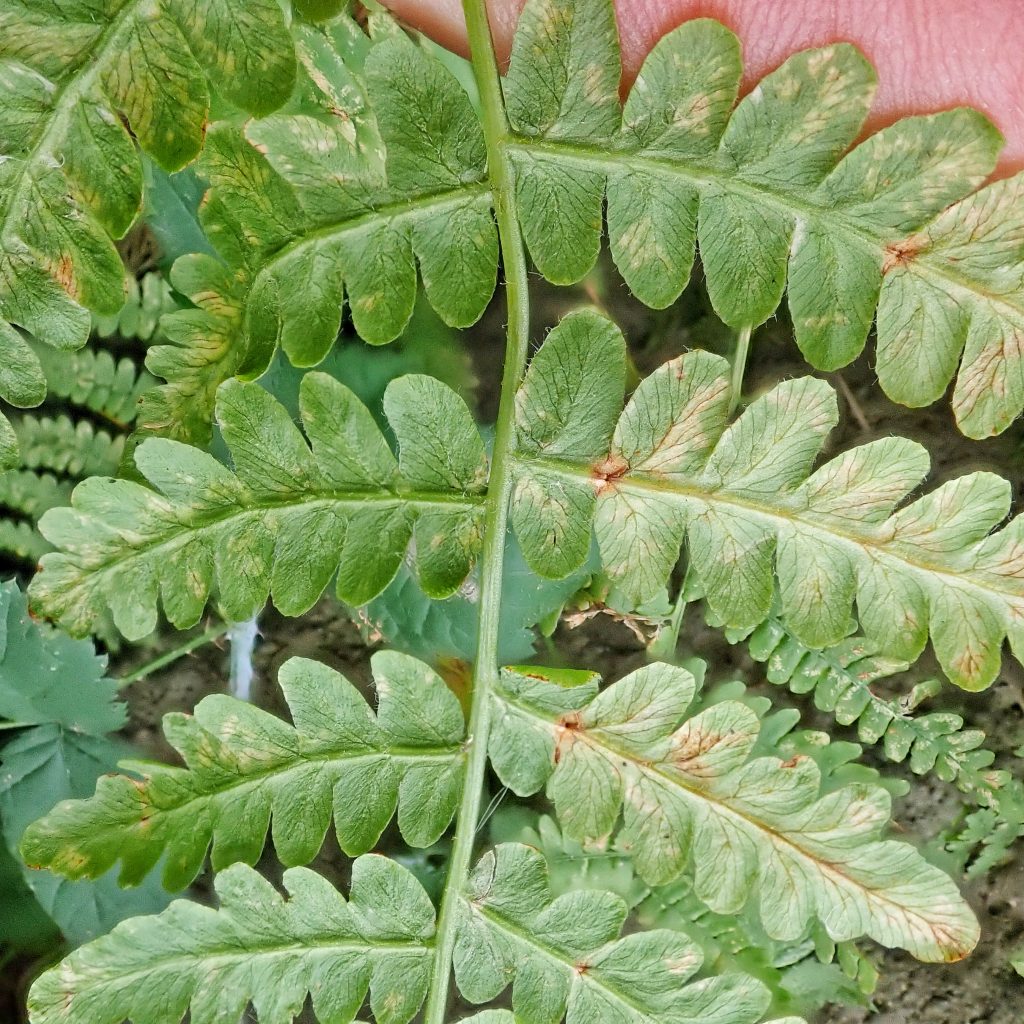
Though it has a long history of being eaten, all of the above ground parts of Bracken Ferns contain varying amounts of the vitamin B depleting enzyme thiaminase, and the known carcinogen ptaquiloside. Proper preparation may remove most of its toxicity, and extremely moderate consumption may be relatively harmless, but overall its use as a food source is discouraged, because many of its negative effects are cumulative, and aren’t necessarily realized for quite some time. It is considered to be a noxious weed in some places because consumption by livestock can lead to their deaths, and milk from cows that have eaten quantities of Bracken Fern has been linked to several cancers. For a fuller discussion and more information on edibility, see here and here. It is interesting to note that, because deer often feed heavily upon the fiddleheads (the new shoots before they have unfurled) in spring, in some tribes it was common practice for the hunters to eat fiddleheads exclusively prior to a spring hunt, so that they would give off the scent of ferns and be able to approach the wary animals unbetrayed by scent. Once a successful kill was made the hunter returned to a normal diet.
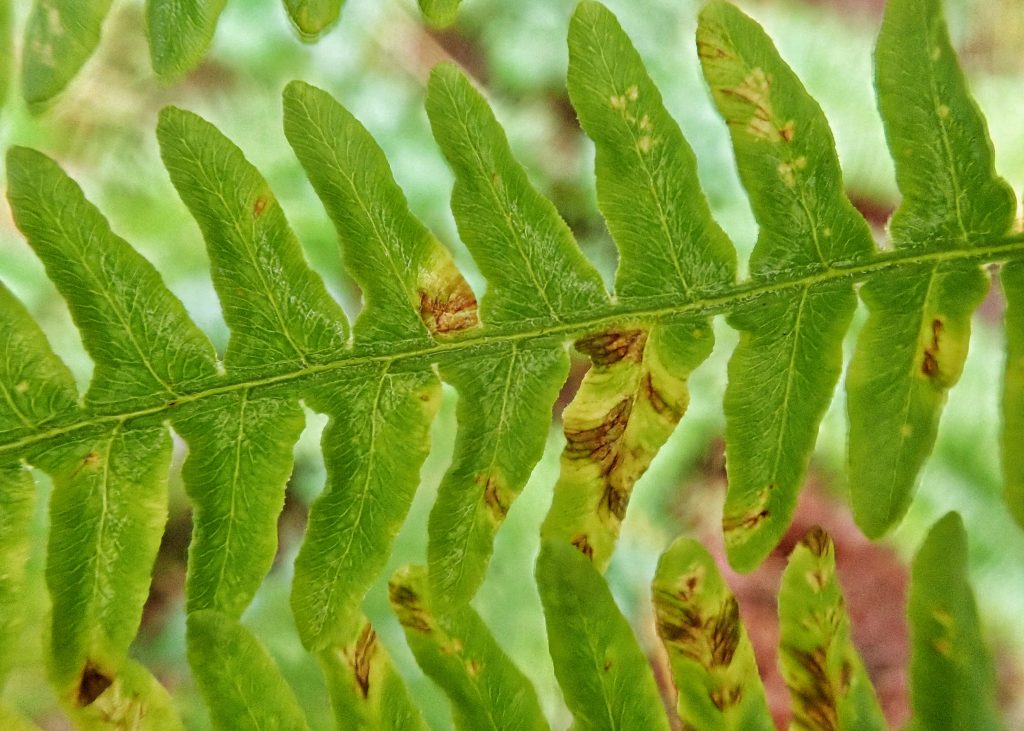
Most indigenous peoples seemed to realize the negative cumulative effects of the fiddleheads and leaves, and mostly only used the rhizomes for food, which were usually roasted or boiled before they were eaten, and sometimes pounded into flour. But they did find a plethora of medicinal purposes for Bracken Ferns, including use as an antidiarrheal, antiemetic, antiseptic, and antihemorrhagic treatment. They also used it to combat rheumatism, liver disease, tuberculosis, venereal disease, cancer, and to help heal wounds of all kinds. Bracken ferns had many of the same utilitarian purposes as Lady Ferns and Dryopteris expansa, as well as being used in basketry and bedding. For a much more complete list of the ways in which Pteridium aquilinum was utilized by indigenous cultures, see the 114 entries at the Native American Ethnobotany Database.
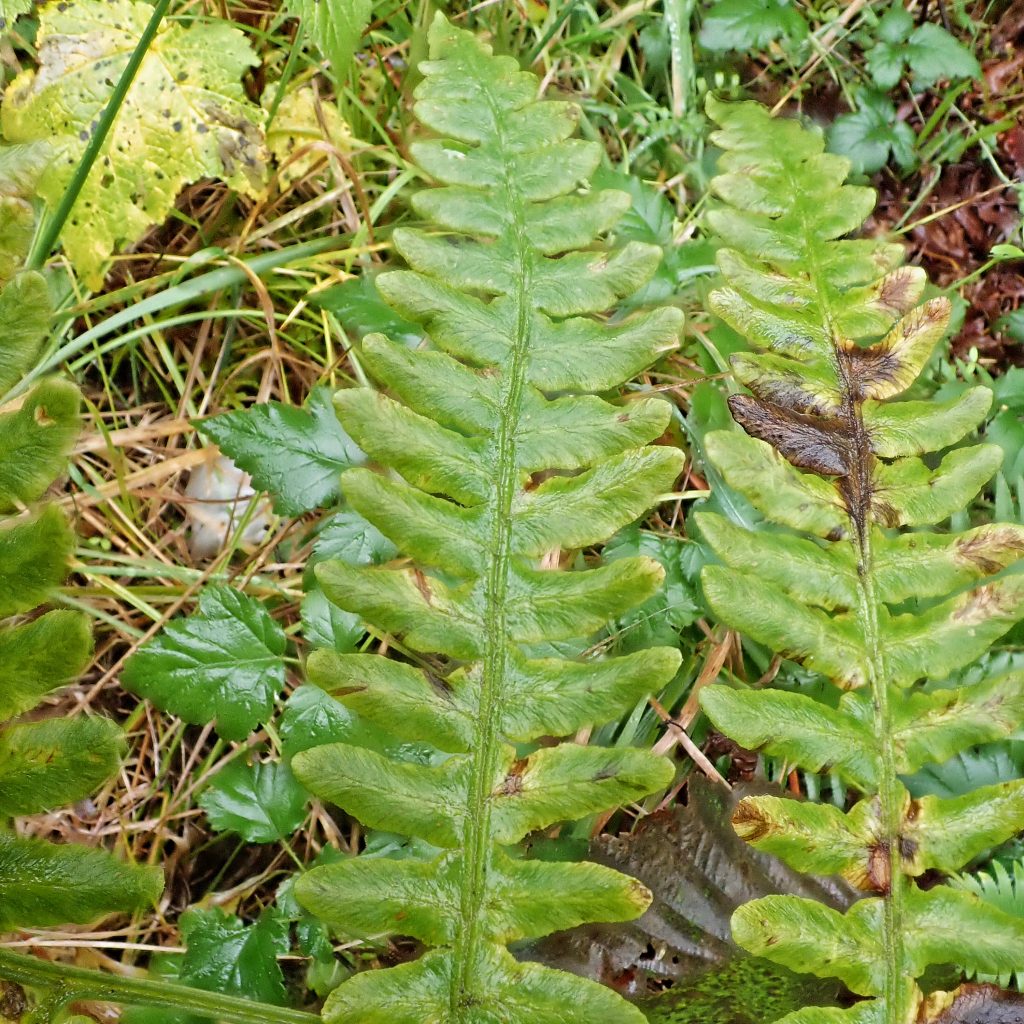
Description-Large (up to 15’ tall), light green, spreading, thrice pinnate, ferns growing singly from a rhizome; pinnules triangular, usually less than 20mm long, smooth to gently lobed or minutely toothed on margins, with less pointed tips higher on the plant; sori are near the margins and are covered by a rolled under edge; though the individual plants die off in winter, the fronds persist for quite some time, sometimes for years.
Similar species-See above
Habitat-Woods, forest edges, slopes, meadows, disturbed ground, from moist to dry.
Range-Nearly worldwide; region wide in the PNW, except for the most arid locales.
Reproductive timing-Spores released in August and September.
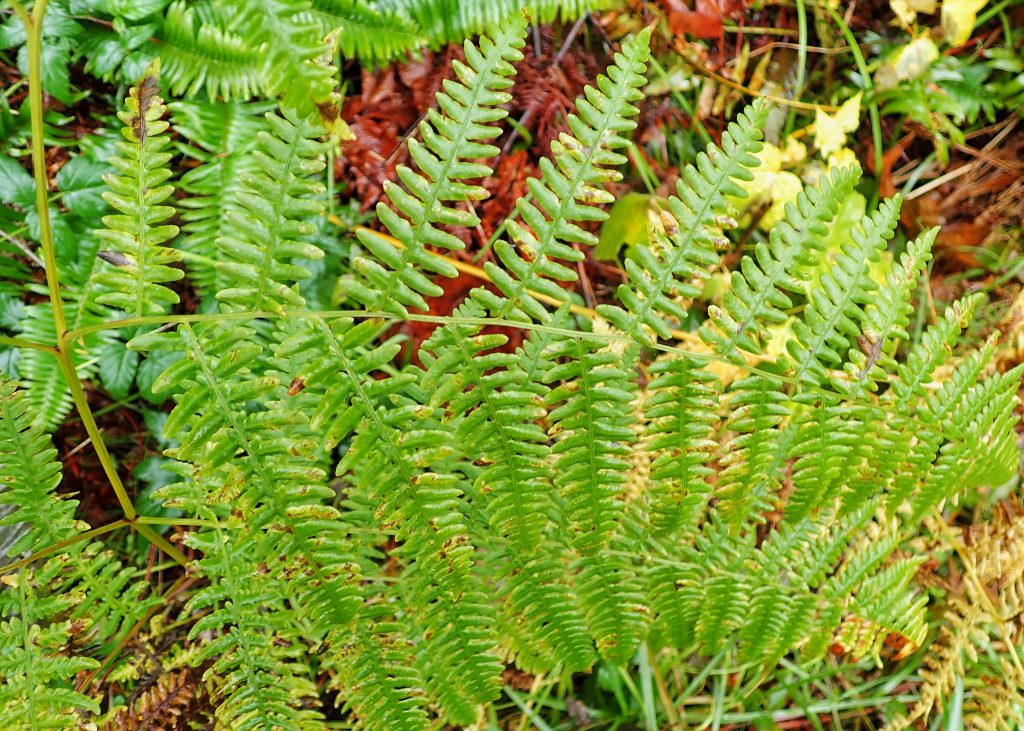
Eaten by-Deer, elk, and rabbits will browse the fiddleheads in early spring; springtails, mites, and larvae of the moths Philedia punctomacularia and Leptarctia californiae; leaf mining larvae of the flies Phytoliriomyza clara, and various members of the genus Chirosia; true bugs in the genera Bryocoris, Philaenus, and Criomorphus; sawfly larvae in the genera Strongylogaster and Aneugmenus; the longer list for this species, as opposed to Dryopteris expansa and Athyrium filix-femina, is undoubtedly due to greater study of this organism, rather than greater diversity of usage.
Etymology of names–Pteridium is from the Greek word for fern. The specific epithet aquilinum is from the Latin for ‘eagle’, because Linnaeus perceived the image of an eagle in a transverse section of the root. Bracken is from Old Norse, and meant ‘fern’.
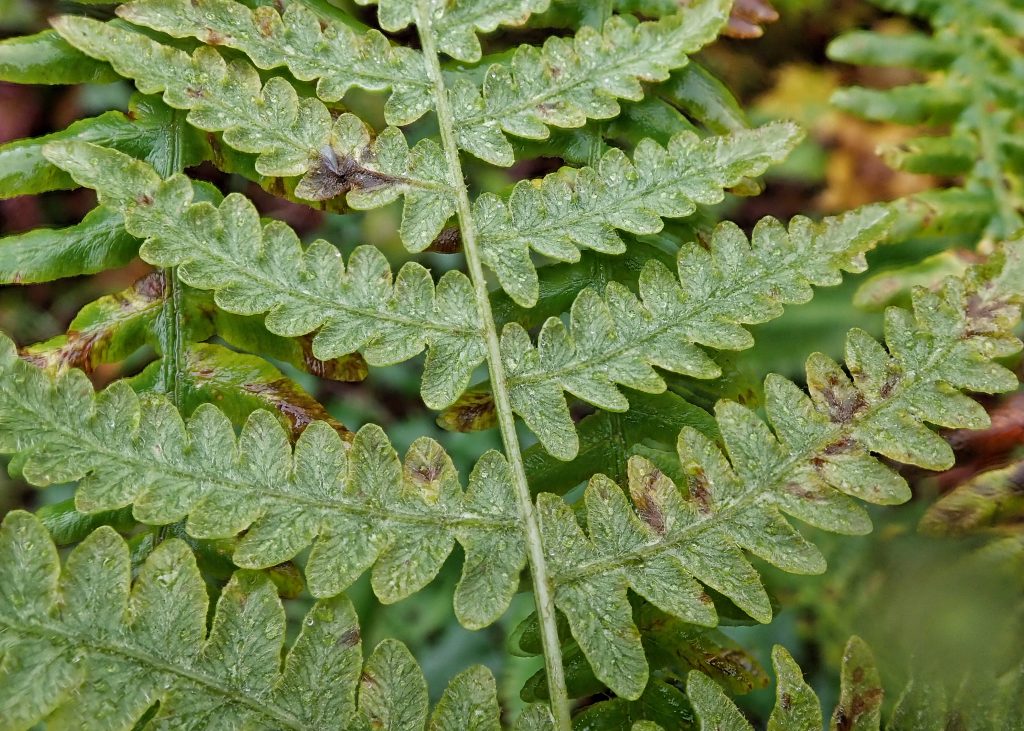
BRIT – Native American Ethnobotany Database
https://eflora.neocities.org/Pteridium%20aquilinum.html
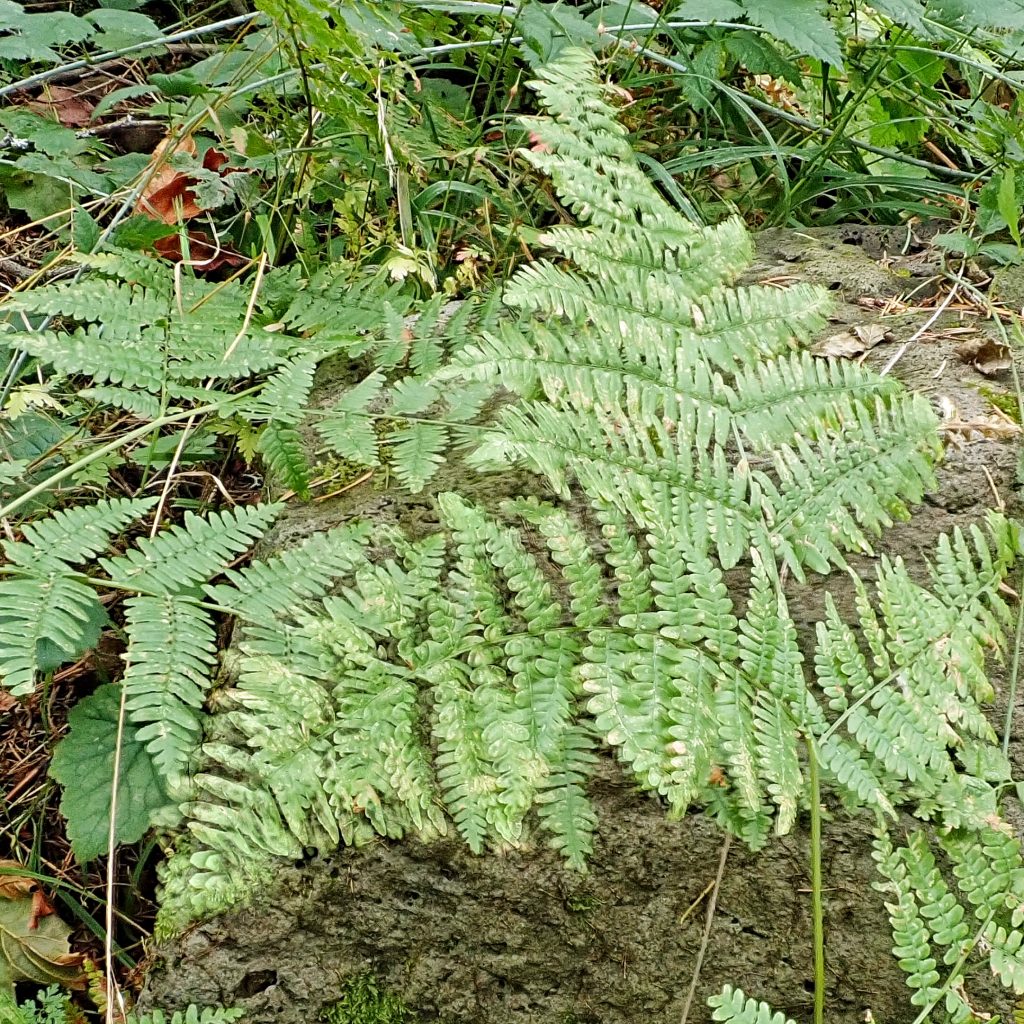
Thank you for again having an amazing blog entry written. I spent hours trying to track down the identity of a fern in some of my photographs and went through all the lookalikes and the same process of working out the differences as you laid out at the beginning of this blog – I should have checked here first! Your summaries are always excellent and manage to sum up everything I find at dozens of sources, somehow in just a few sentences. Thank you for sharing with us all!
Thank you for your appreciation, Meghan!